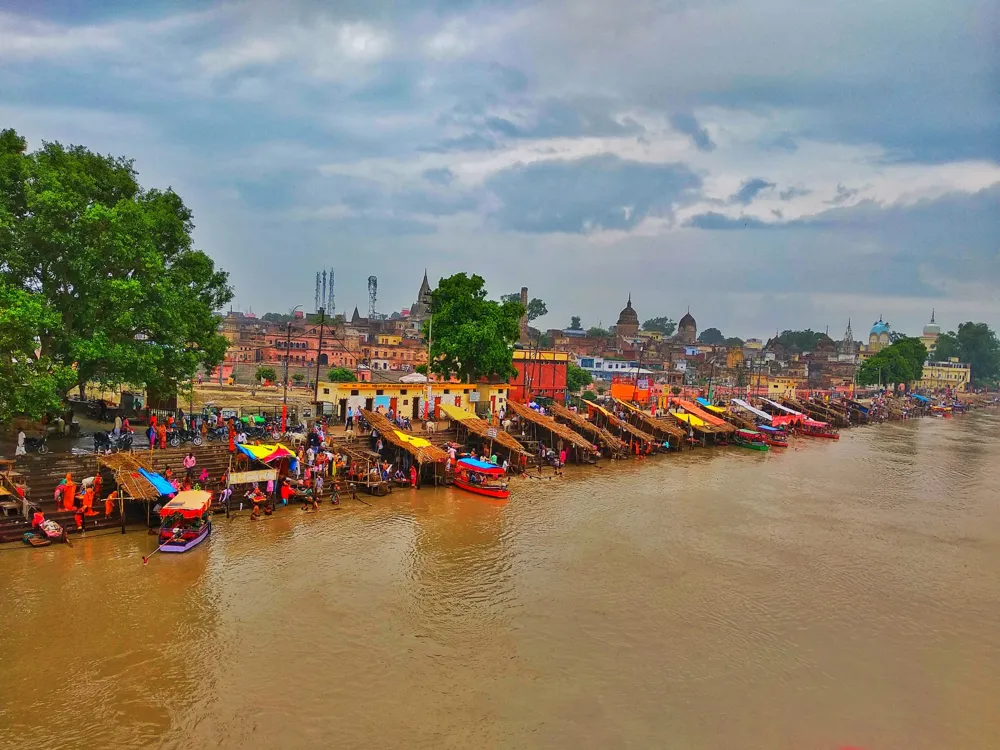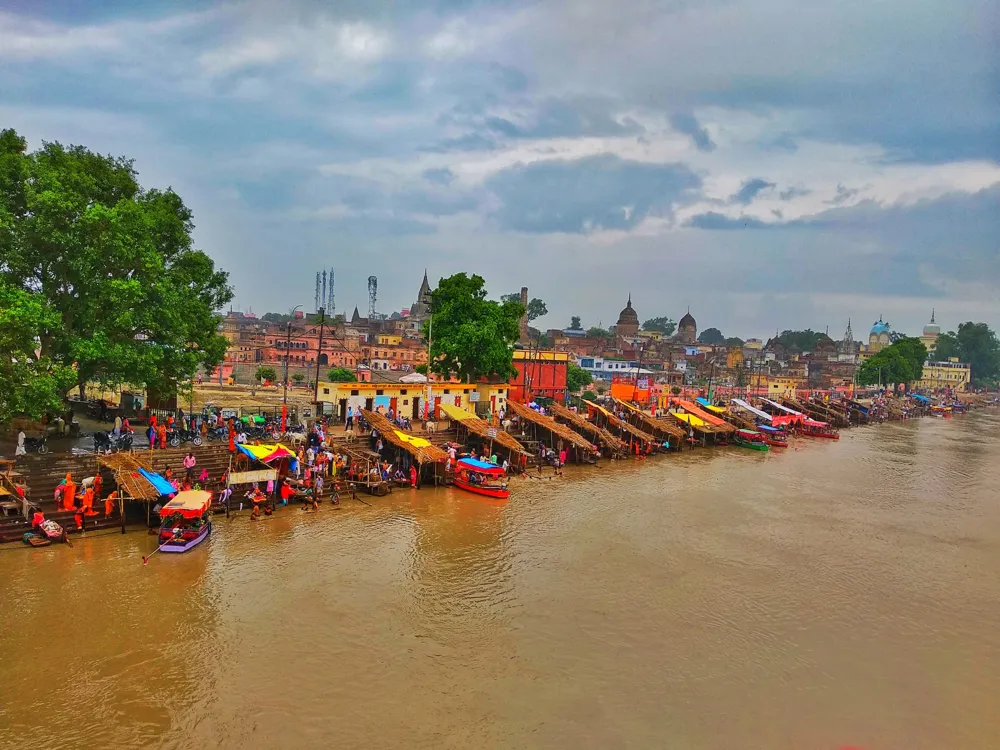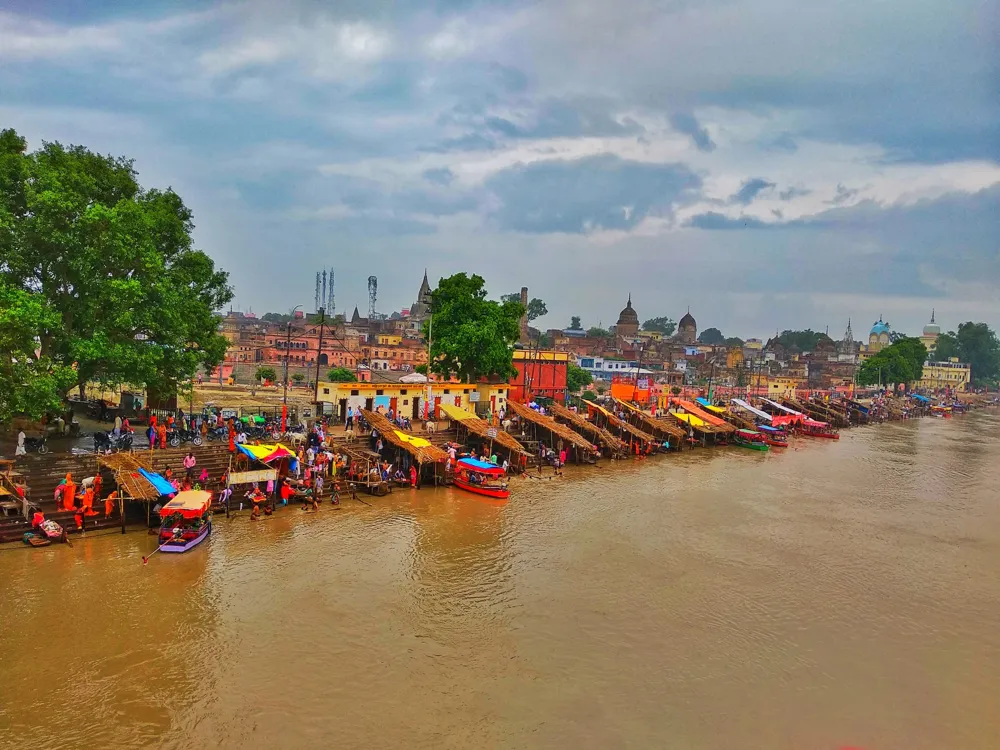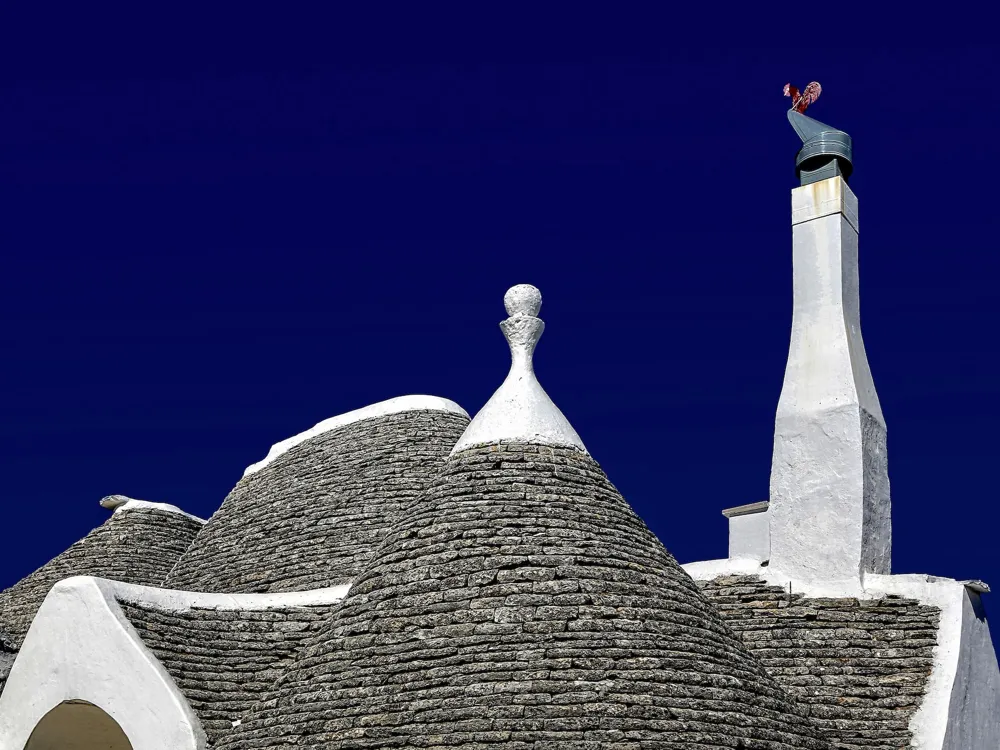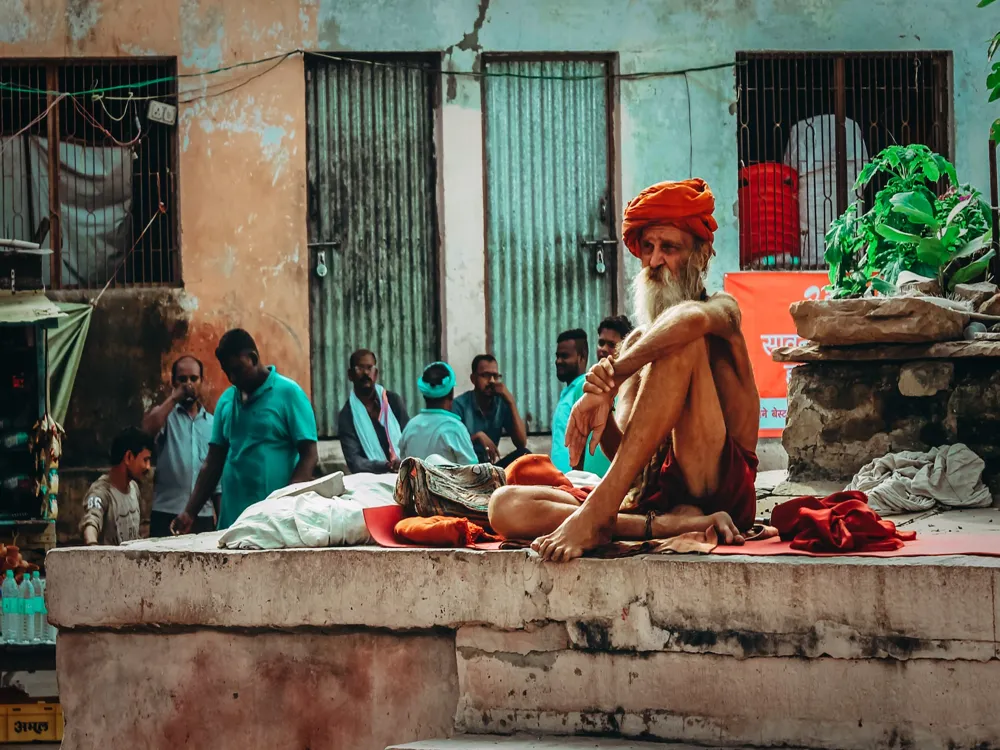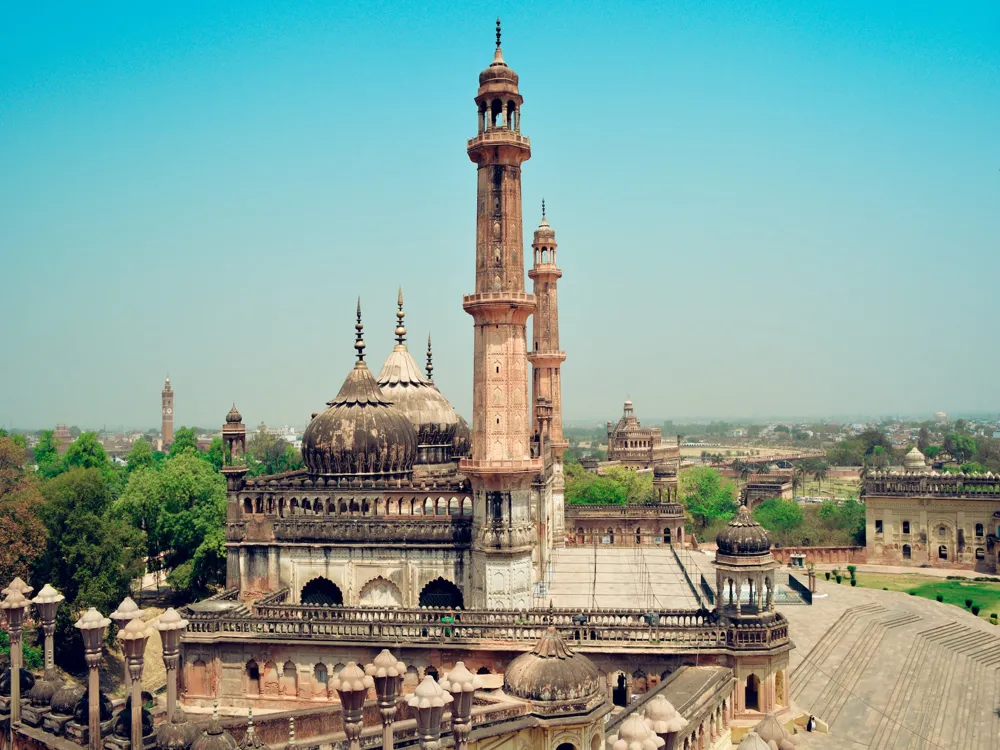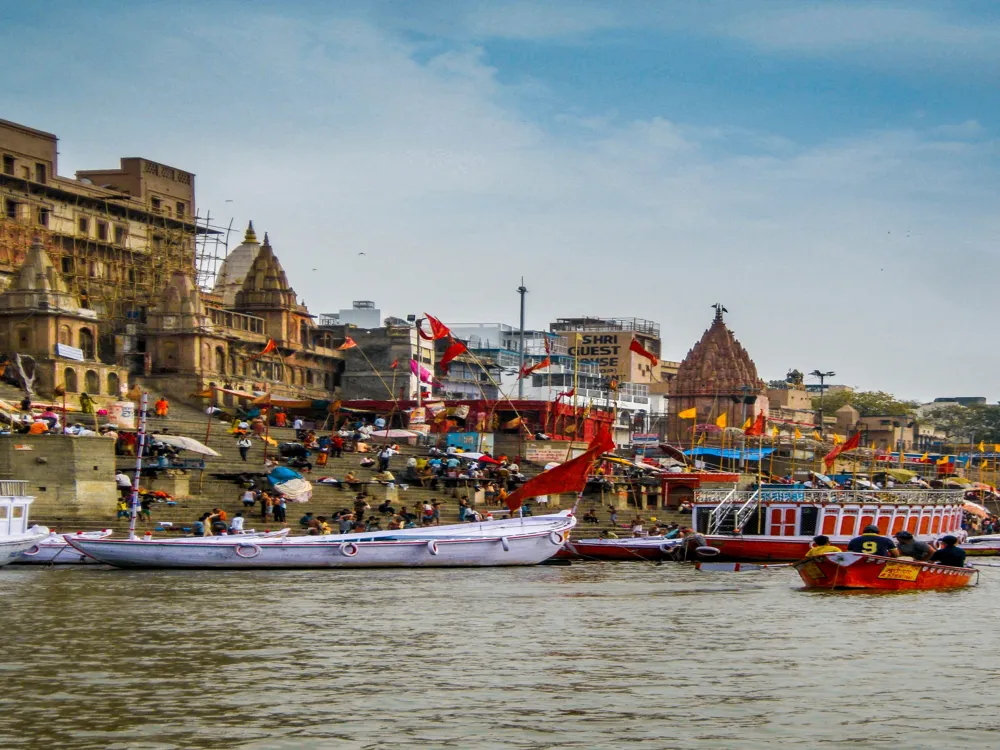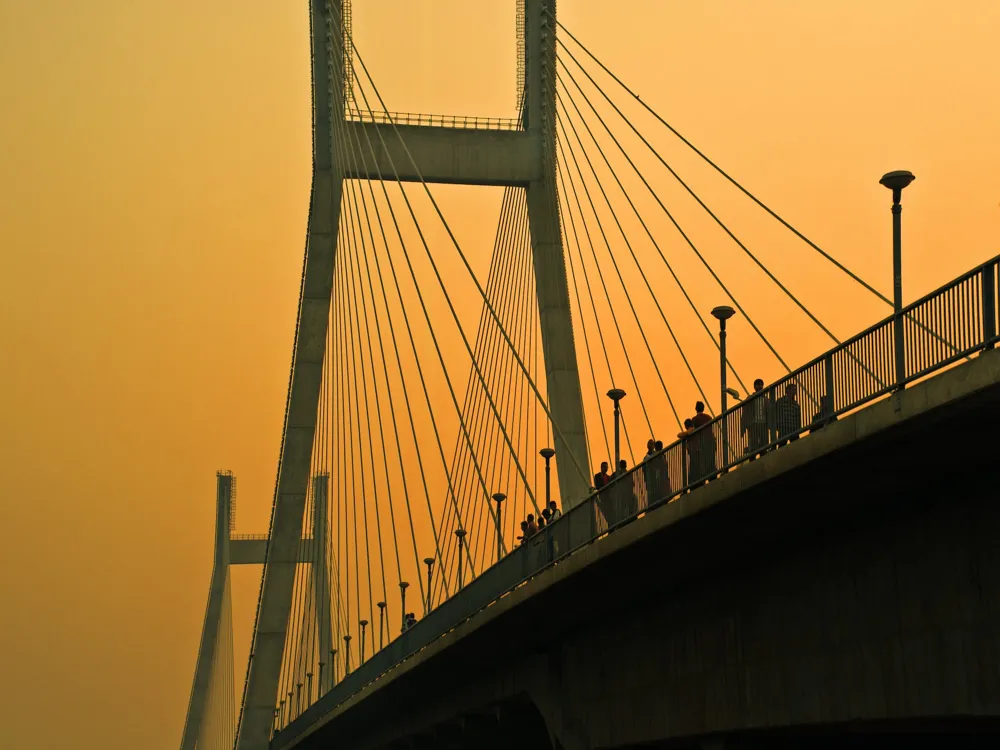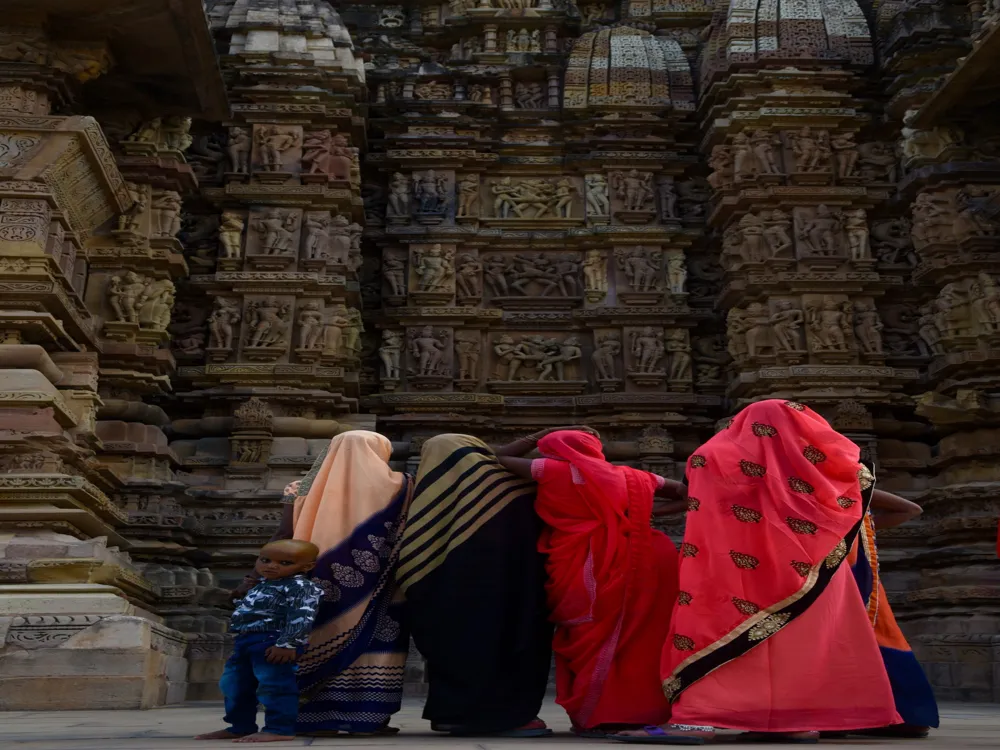Kanak Bhawan, a significant corner located in the heart of Ayodhya, Uttar Pradesh, holds an adored position in Indian culture and history. venerated as the hearthstone of Lord Rama and Goddess Sita, it stands as a testament to the megacity's ancient heritage. The Bhawan is named' Kanak' due to its association with gold; the word' Kanak' means gold in Sanskrit. According to legends, the Bhawan was blessed to Sita by Queen Kaikeyi, Rama's mammy, as a marriage present. This point attracts thousands of pilgrims and excursionists each time, drawn by its religious significance and the serene air it exudes. The Kanak Bhawan in Ayodhya is a phenomenon of Indian temple architecture. It reflects an emulsion of colorful architectural styles that have evolved over centuries. The primary structure showcases the rudiments of traditional Hindu temple armature with hints of Mughal influence, a testament to the different artistic and literal relations in the region. The temple's main facade is adorned with intricate busts depicting scenes from the Ramayana, along with flowery motifs and geometric patterns characteristic of Indian temple art. When visiting Kanak Bhawan, it's important to dress conservatively out of respect for the religious nature of the place. Traditional Indian vesture is recommended, but modest western apparel is also respectable. Avoid wearing film or sleeveless covers. The ideal time to visit Kanak Bhawan is during the cooler months from October to March. The rainfall is affable, making it easier to explore the temple and its surroundings. Also, visiting during the Hindu carnivals like Ram Navami can be a unique experience, though it's also the busiest time. Photography inside the main temple area might be restricted, so it's judicious to check with the temple authorities beforehand. Admire the saintship of the temple by clinging to these restrictions. Kanak Bhawan in Ayodhya is well connected by road, rail, and air. The nearest airport is Ayodhya Airport, from which one can hire a hacker to reach the temple. Ayodhya road station is also an accessible option, as it's well connected to major metropolises in India. For those preferring to travel by road, Ayodhya has a good network of motorcars connecting it to colorful metropolises. Original transport within Ayodhya, like bus cabs and hacks, is readily available for exchanging to Kanak Bhawan. READ MORE:-Overview of Kanak Bhawan in Ayodhya, Uttar Pradesh
The temple complex's armature is a mix of several literal ages, reflecting the colorful phases of its construction and addition over centuries. Firstly erected by King Vikramaditya of the Paramara dynasty, it has experienced several emendations, with the most significant one carried out by Queen Vrishbhanu Kuwari of Tikamgarh in the 19th century. The temple's beauty is enhanced by the intricate busts and the use of vibrant colors. The icons of Lord Rama and Goddess Sita, adorned in gold and precious jewels, are the center of devotion and are deified by innumerous addicts. The Bhawan's atmosphere is invested with church, and the sound of prayers and hymns adds to its serene air.Architecture of Kanak Bhawan
The inner sanctum, where the icons of Lord Rama and Goddess Sita are placed, is an exquisite chamber with walls and ceilings adorned with gold and precious monuments, reflecting the temple’s name. The use of vibrant colors and detailed busts in the prayer hall creates a witchy visual experience. The temple complex also includes several lower sanctuaries and yards, each with its own unique architectural rudiments, contributing to the overall majesty of Kanak Bhawan. The harmonious mix of different architectural styles not only showcases the professed artifice of the crafters but also narrates the rich artistic history of Ayodhya.Tips for Visiting Kanak Bhawan
Dress Appropriately
Best Time to Visit
Photography Restrictions
How To Reach Kanak Bhawan
Kanak Bhawan
Ayodhya
Uttar Pradesh
₹ 9,500 onwards
View ayodhya Packages
Weather :
Tags : Temple
Timings : 8:00 AM to 11:00 AM
4:30 PM to 9:00 PM
Aarti Timings
Summers - 8:00 AM to 9:00 AM and 7:00 PM to 8:00 PM
Winters - 8:30 AM to 9:30 AM and 6:30 PM to 7:30 PM
Planning a Trip? Ask Your Question
Ayodhya Travel Packages
View All Packages For Ayodhya
Top Hotel Collections for Ayodhya

Private Pool

Luxury Hotels

5-Star Hotels

Pet Friendly
Top Hotels Near Ayodhya
Other Top Ranking Places In Ayodhya
View All Places To Visit In ayodhya
View ayodhya Packages
Weather :
Tags : Temple
Timings : 8:00 AM to 11:00 AM
4:30 PM to 9:00 PM
Aarti Timings
Summers - 8:00 AM to 9:00 AM and 7:00 PM to 8:00 PM
Winters - 8:30 AM to 9:30 AM and 6:30 PM to 7:30 PM
Planning a Trip? Ask Your Question
Ayodhya Travel Packages
View All Packages For Ayodhya
Top Hotel Collections for Ayodhya

Private Pool

Luxury Hotels

5-Star Hotels

Pet Friendly







